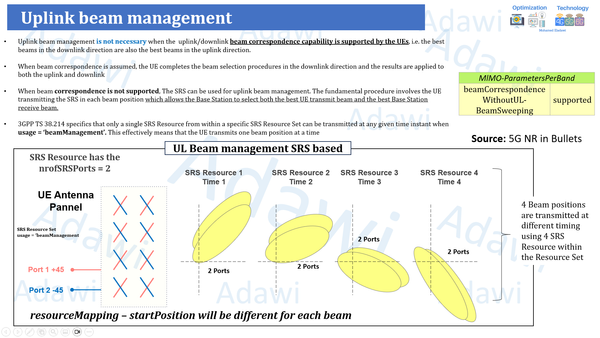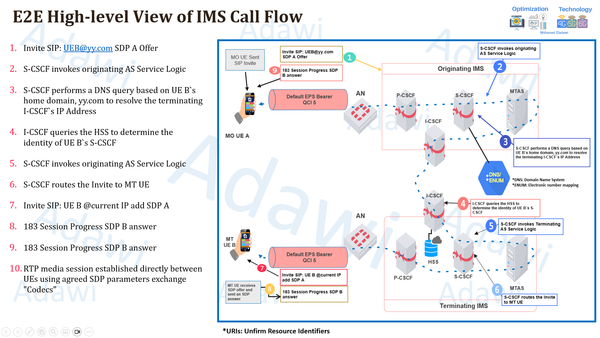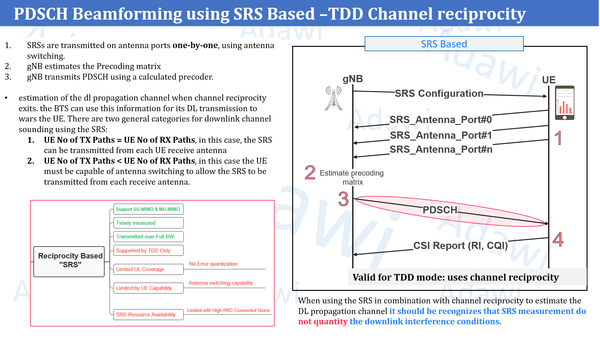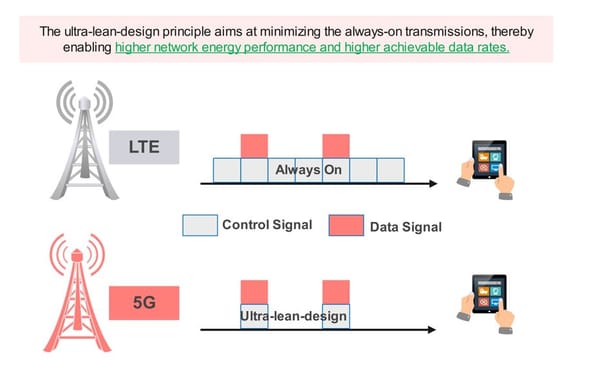5G Standalone Challenges

This article will cover 5G Standalone challenges and other considerations that should be addressed to all related stakeholders before moving from 5G NSA to a 5G Standalone network.
(1) 5G Standalone will Offer less DL User throughput compared with Non-Standalone
5G Standalone will offer less speed compared with 5G NSA due to two main reasons that will be presented below with examples.
The examples used in this section consider the following assumption: 8SSBs, SCS 30kHz, SIB1 using 48RBs, SIB1 Periodicity is 20ms, 5G BW is 40Mhz, and 4G BW is 20Mhz.
(1) Extra SIB1 Overhead in 5G SA
- NSA SIB1 has less content than SA; 5G SA SIB1 will use more resource blocks.
- As per 3GPP, 5G SA uses 48 to 96 RBs for SIB1 CORESET0.
- The minimum number of used Resource blocks might vary from one Vendor to another and might be less than the standardized 3GPP Values as this all related to the internal algorithms for the vendors.
Based on the below-estimated calculation example, CORESET0(Used for SIB1) overhead can reach up to 11% and 4.4% for 5G BW 40Mhz and 100Mhz, respectively, can have a high impact on the maximum 5G Speed.
SIB1(Coreset0) overhead = Total number of RBs used by SIB1 / Total Channel RBs
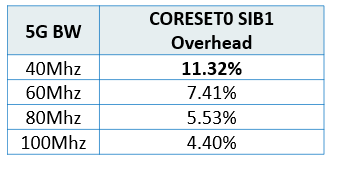
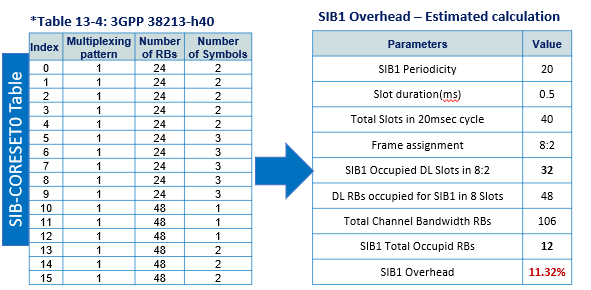
Estimated impact on maximum user throughput
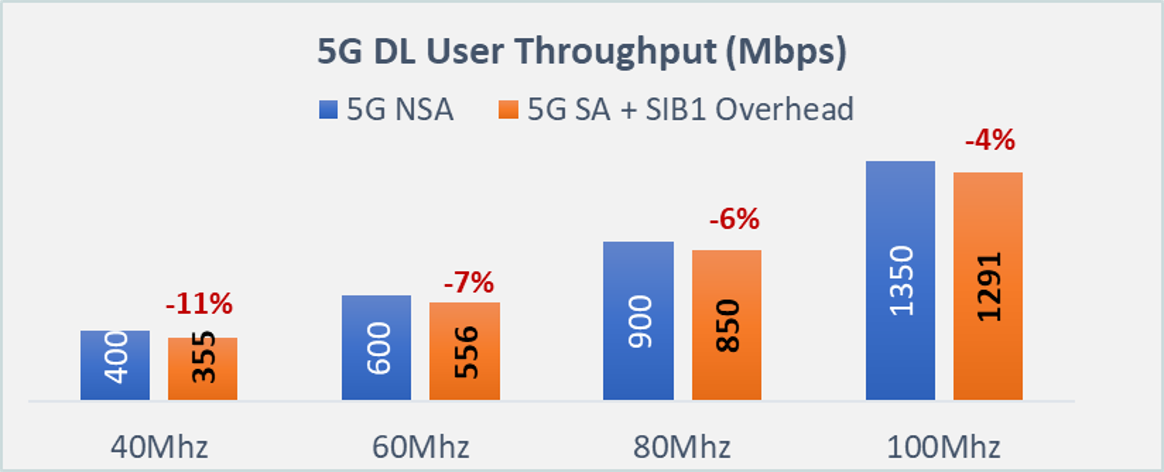
(2) No LTE Data Splitting in 5G SA
5G Standalone Speed will only be generated from the 5G Leg. Accordingly, the impact will vary based on the 4G carrier combination and ENDC User capabilities for the 5G + 4G CA combination.
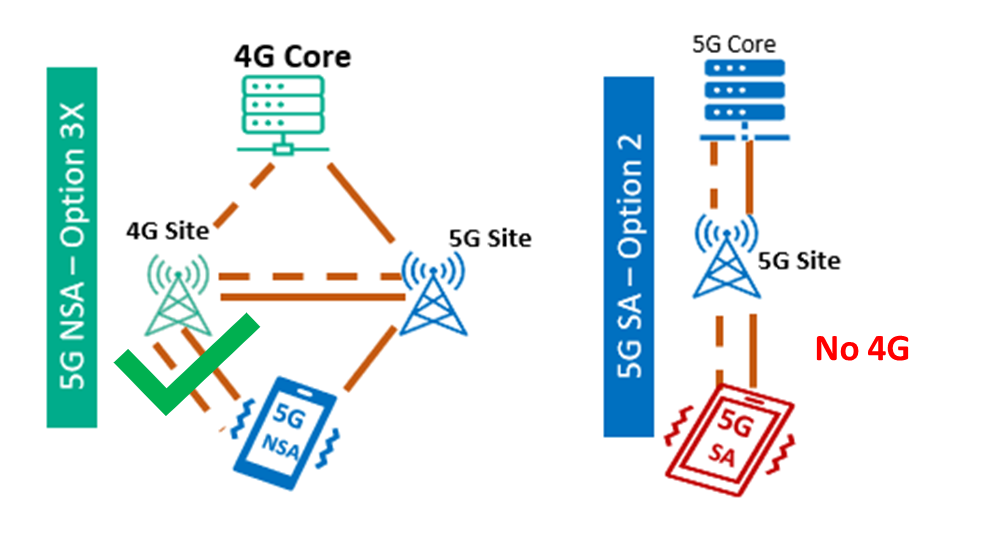
In this example, 5G DL Speed will drop by around 35% due to CORESET0 overhead and lack of 4G Data-Split.
Assumption used:
- 4G BW = 20Mhz and maximum speed achieved is 140Mbps
- 5G BW = 20Mhz and maximum speed achieved is 400Mhz
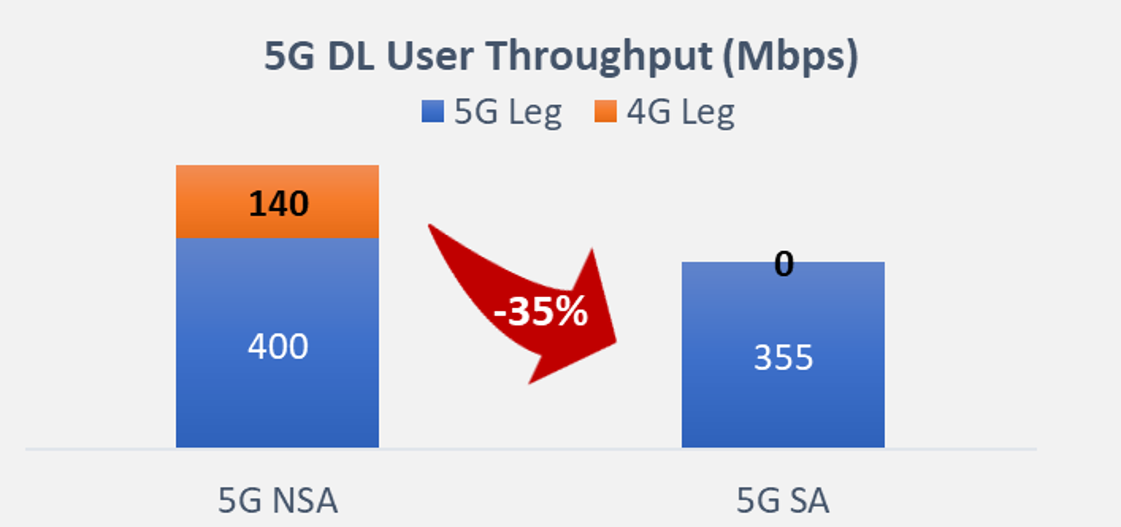
(3) Higher Call-Setup time delay in case VONR is not supported
This part will illustrate the high-call setup challenge and the main reasons that might cause high-call setup time delay in 5G Stand-alone.
When UE initiates an IMS voice session through an invite message to establish a Mobile originating call or Terminating call
The 5G Radio access network will receive a PDU session request from the 5G Core Network to establish a QoS stream for voice services.
The 5G RAN will verify whether to allow Voice over 5G by checking specific factors, such as whether Voice over NR is turned on/supported, N26 deployment, and the current radio condition.
Assuming Voice Over NR is not supported, the 5G Radio access network will reply with PDU Session Resource Setup Response. Specifies failure cause as EPS Voice Fallback
After the 5G, BTS will deliver related redirection and handover-related thresholds through the RRC Reconfiguration message and initiate either the RRC Release message or Handover Command based on the type of the EPS Handover.
After completing the RRC Connection setup and once the UE switches to EPS Via N26 Interface, the UE will initiate the Tracking area update process.
In case there is no N26 interface available, the UE will initiate EPS attach message.
All the highlighted signaling Process starting from 5G QOS Service establishment until the Tracking area update is an add-up signaling processes that will increase the call setup time delay by more than 1 second.
In some abnormal cases, the call setup time can increase by up to 5~6 Seconds.
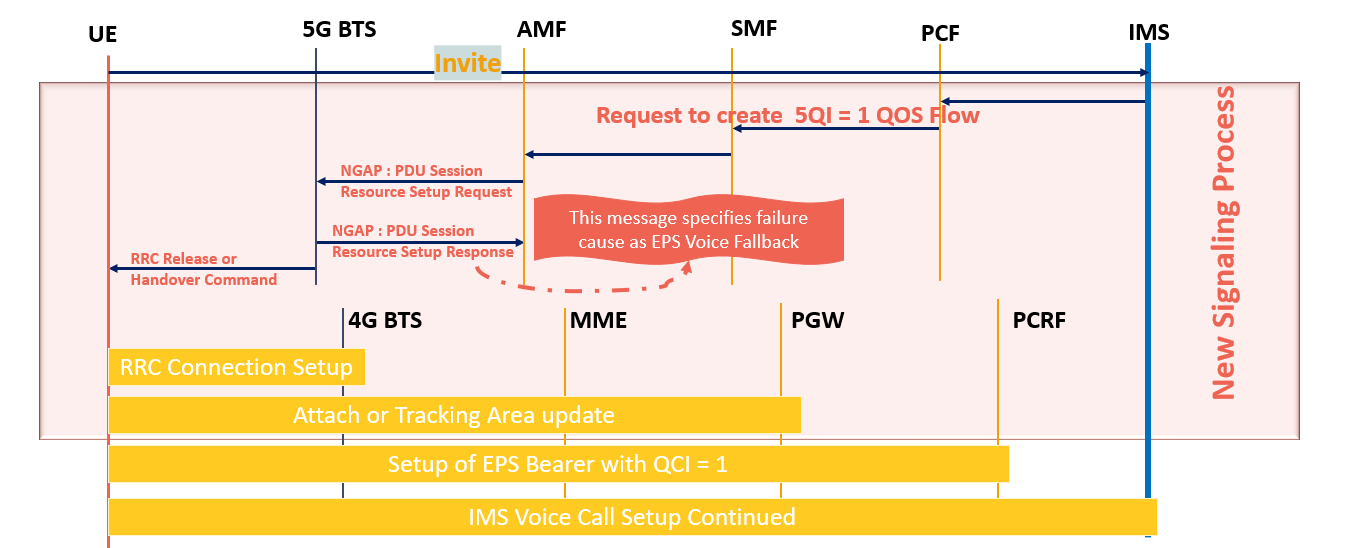
(4) 5G Stand-alone 5G to 4G IRAT Challenges in the initial phase of the deployment
This part will cover the main challenges related to Interoperability related parameters and considerations.
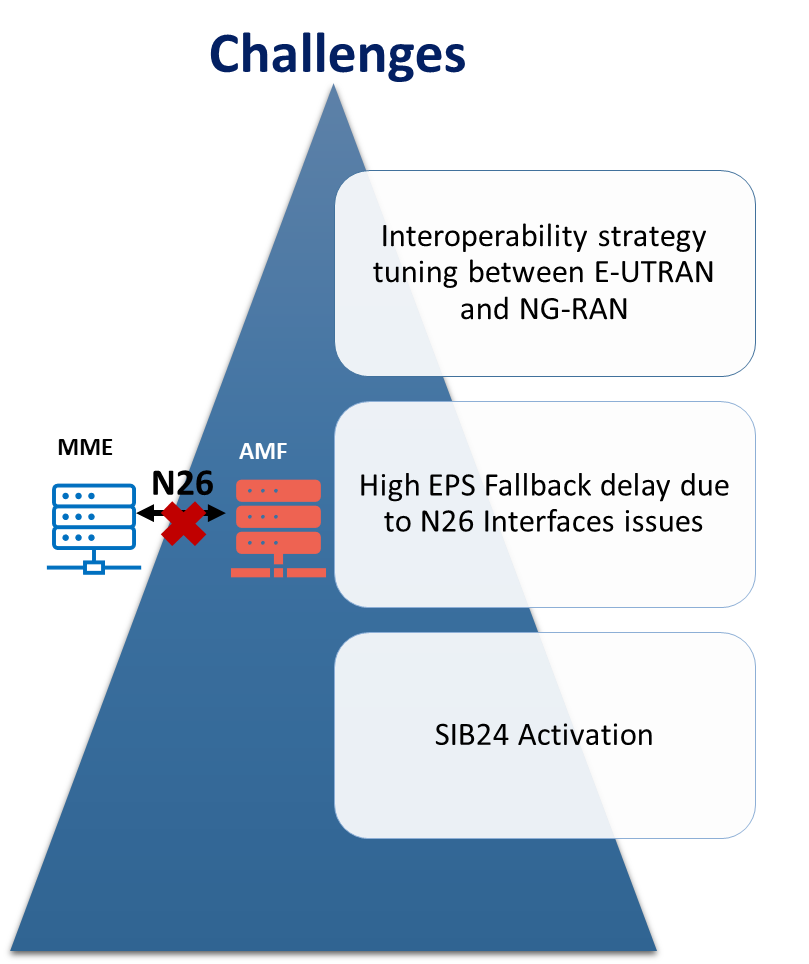
- N26 interface issues need to be verified to avoid additional call setup time delays for EPS services.
- SIB24 should be enabled from the 4G Side to ensure cell reselection works from 4G to 5G; however, some devices do not support SIB24.
- Inter-operability settings are similar to 4G to 3G parameters; all the following need to be checked and tuned during the initial phase of the network to ensure a smooth transition between 4G & 5G for Idle, Connected, and Fallback services.

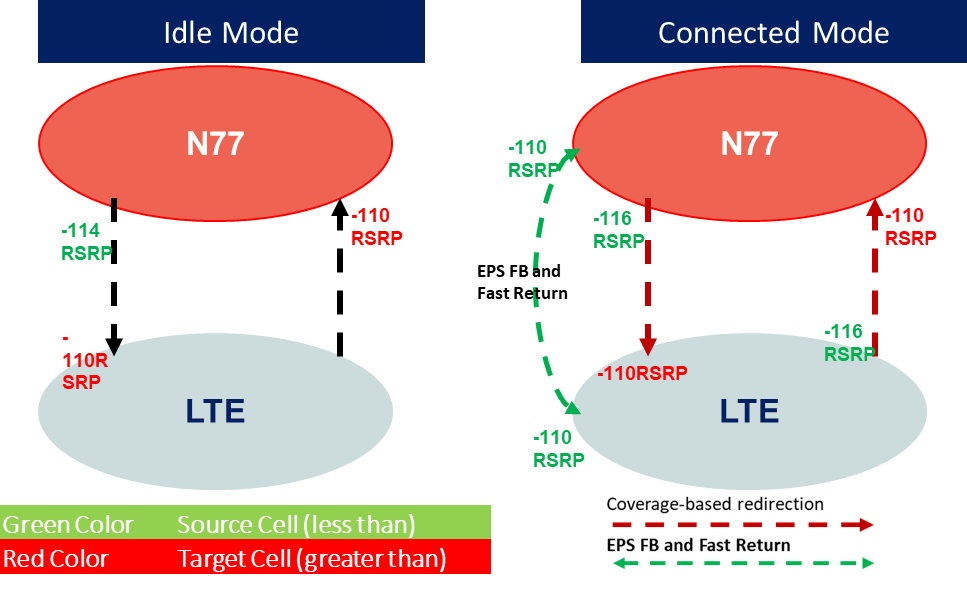
*The Layering Strategy figure shared here is just and example and only for reference, and it is proposed to tune your network based on actual network conditions.
(5) 5G Stand-alone offers better UL Coverage and performance compared with 5G NSA
This section presents the main advantage offered by 5G SA for Mobile Broadband users.
5G Stand-alone offers better UL Coverage and performance compared with 5G NSA. As shown below, in 5G non-standalone, the UE utilizes one TX branch for each leg, one TX branch for 4G, and one TX branch for 5G. Accordingly, due to dual connectivity, UE will lose 3dB Tx power and 1 Tx transmission channel in NSA architecture.
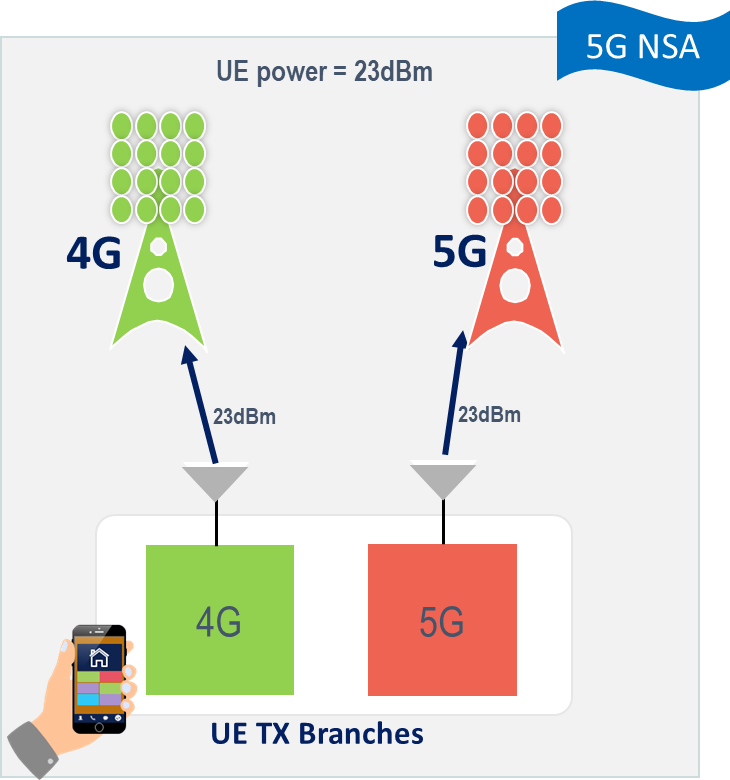
As shown in the below figure. SA architecture offers better coverage by 3dB and better UL speed due to fully utilizing 2 UE TX for 5G, which will add up the power when using the two TX branches.
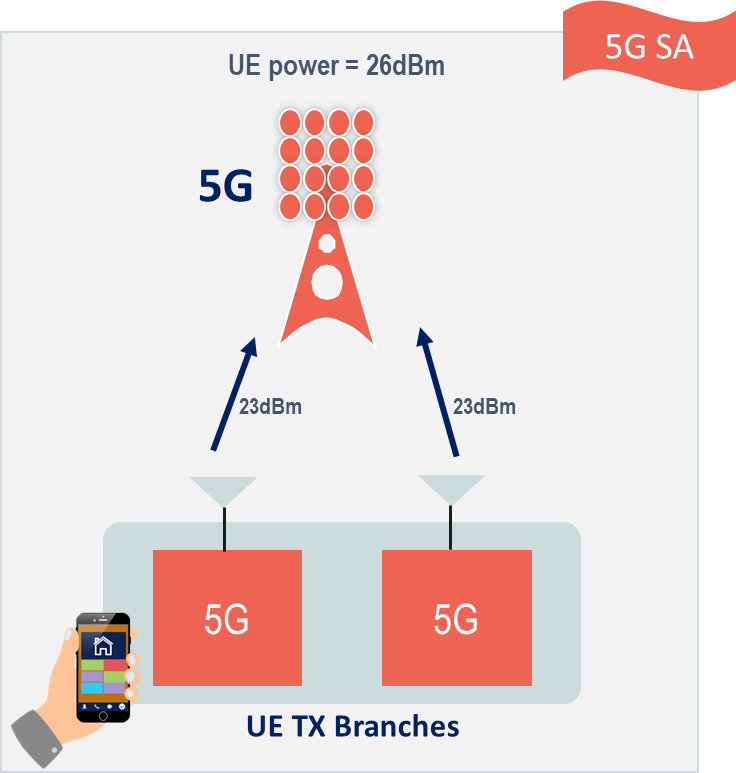
*This example assumes UE Capability supporting 26dB

